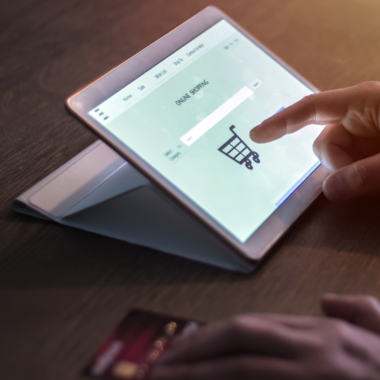
- Three minutes read
Coaching performance
When introducing mobile order-ahead capabilities, the right level of preparation and resources can go a long way in keeping frustrations at bay, on both sides of the service counter.
The agility of mobile order-ahead is all the rage with small and medium-sized businesses (SMBs) who see it as a very attractive value-add. In 2015, mobile order-ahead was an available feature for roughly 60,000 merchant locations across the U.S, that figure tripled in 2016 to 180,000 and proved successful for likes of Starbucks and Five Guys. But, as with any new system, the roll out of new solutions can involve big operational changes. Keeping on top of the innovation game isn’t always straightforward.
When introducing mobile order-ahead capabilities, the right level of preparation and resources can go a long way in keeping frustrations at bay, on both sides of the service counter. That’s where Paysafe Group’s FANS Entertainment, comes into play. A mobile ordering company, FANS recently launched GOLO, an online and mobile ordering platform designed to connect smaller merchants with local consumers.
Giving merchants access to eCommerce
Jean-François Noël, CEO of FANS Entertainment and GOLO, says the solution is designed to help SMBs step up their eCommerce game by creating a marketplace through which customers can submit orders for local pickup or delivery. It is free to set up shop on GOLO and merchants are only charged a transaction fee per order, which Noël says helps smaller businesses access the online marketplace with minimal start-up and running costs.
“In a smaller merchant’s reality, very few are ready to invest $10,000, let alone $100,000, in an eCommerce website and a mobile ordering application,” Noël says. “GOLO provides a very secure environment, with all the benefits we’ve come to expect of online markets, at a very low cost.”
Readying SMBs for the big leagues?
Wanting access to an eCommerce marketplace does not mean shop owners are ready to dive in. “The first thing that many of our merchants realise is that they have to change the way they operate to meet the customer flow generated by the online ordering system,” says Noël.
Case in point was early adopter of the GOLO solution, a Quebec City restaurant, which saw an increase in lunchtime orders after signing up for the service.
“Their success in attracting customers via the app created a chaotic environment” says Noël. “They were having to recognise, process and prepare a previously unexperienced volume of orders, for customers who arrive expecting their takeout to be ready,”.
To help the client settle the chaos, the GOLO team shared best practice on how to better manage and accommodate the new volume of pickup orders. Recommendations included rearranging the restaurant’s counter so customers who placed orders using GOLO would have a designated section for picking up their orders.
It’s not just operations that need to be refreshed when adapting for order-ahead, though. Content is key to playing a winning game. “[Merchants] always underestimate the content building in the app,” Noël says.
The GOLO team often works with merchants to advise on how to best present their offering. For many SMB merchants, content creation for a new platform is fairly new territory. Even basic advice, such product descriptions accompanying high-quality, well-shot images, is welcomed counsel.
Data sharing helps to deliver
The market for online ordering from restaurants alone is growing quickly. Data from The NPD Groupfound an 18% increase for digital food orders, including mobile apps, text messages and online ordering forms since 2016. The NPD report also found 1.9 billion food orders were placed using these methods, with a significant rise in orders placed using mobile apps.
“A crucial benefit of the GOLO platform for merchants comes from data insight,” says Noël. To further encourage best practice, data is shared between all its stores. This helps to make sure that new SMBs signing up are better prepared for the capabilities that this new technology can bring.
Insights around peak times can help the planning of inventory and staffing needs. Most shop owners are too busy serving customers and keeping the lights on to monitor the average dollar value of each client, for example. GOLO eliminates that blindspot by offering robust analytics on web and mobile activity.
How could this work in practice? If a merchant has recently joined GOLO to focus on promoting take away service. While his restaurant barely seats 24 clients, the kitchen can handle more volume. Once they have sold a significant amount of orders through GOLO, the analytics tools will be able to give insight into buyer demographics. In turn, this might help drive marketing decisions, such as creating targeted coupons for a customer segment with higher average transactions.
Whether small businesses will be able to take on the major players of digital ordering remains to be seen. They will have to rely on tools like GOLO where they are aggregated, and where customers can find the bells and whistles they’re used to (promotions, reviews, convenience, etc.). SMBs will also need to rely on their proverbial entrepreneurial adaptability to act and react quickly, because the technology keeps changing at a fast pace.
[The original feature-length article appeared in July’s Payments-as-a-Service (PaaS) Tracker issued each month by PYMTS.COM]




